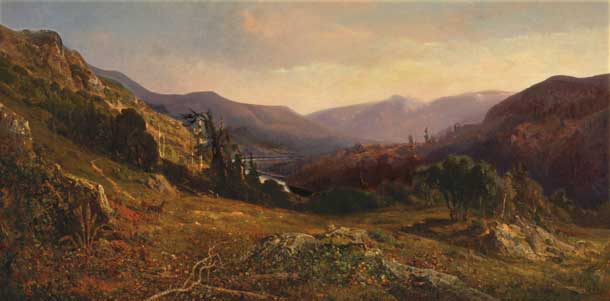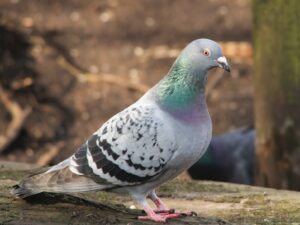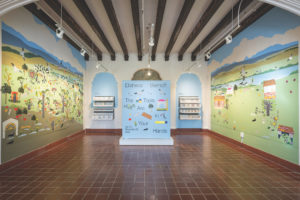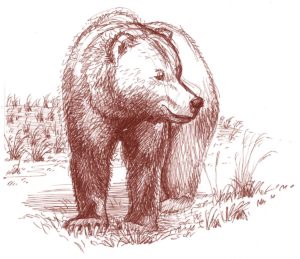The Saint Mary’s College Museum of Art (formerly the Hearst Art Gallery) is honoring California landscape painter William Keith a century after his death with 150 paintings from the college’s permanent collection of 180 Keith paintings. “The Comprehensive Keith: A Centennial Tribute” is on view through December 18, 2011.
While the exhibit spans his lifetime and his travels, lovers of Bay Area nature will appreciate the local landscapes that dominate the exhibit. The paintings show us that much has changed, but they also remind us that a good deal has stayed the same.
I was particularly interested in this exhibit because I’m writing a book about Ina Coolbrith, a close associate of Keith’s. She, Keith, and naturalist John Muir took a long carriage ride in the East Bay hills on a Sunday in early February 1876. Coolbrith (named California’s first poet laureate in 1915) told writer Charles Warren Stoddard that the day was “superb” and that Keith was in “one of his wildest moods.” We can’t recreate Keith’s mood, but we can get a sense of what they saw that day by looking at his paintings.
In one, three cows wade into a pond near a thicket of sycamores, staring curiously at their observers. Cows are also a feature of the landscape in “Peaceful Valley and Quiet Day, Three Ladies Reposing on Grass.” In another painting, long moss hangs from deeply shaded trees along Strawberry Creek in Berkeley, and in “San Francisco Bay from Brown Berkeley Hills,” the view leaps across houseless hills, down to the mudflats of Richmond, across the Bay, and up to a distant Mount Tamalpais. In these and other paintings, valley oaks, blue oaks, sycamores, and madrones are recognizable by species, and you can almost smell the moist meadows. Pink- and gray-tinted skies, white fog, orange poppies, and chestnut-red manzanitas have the same color in these 125 year-old paintings as they do on the trail today.
It’s fun to look at the paintings and try to figure out Keith’s vantage point. It’s also interesting to guess which were done in his San Francisco studio and which en plein air. I viewed the show with California landscape painter, Susan Schneider, who showed me the difference. There was an immediacy and muscular energy of those done outdoors. The ones with crisp and defined shadows and light had been painted in just a few hours, she said, and succeeded in capturing a specific season and time of day. Those done in the studio have a different kind of specificity.
- Russian River Panorama, 1876. Oil on canvas, 36 x 72 inches. Collection of Saint Mary’s College Museum of Art. Gift of Mr. Harmon Edwards. Photograph by Scott McCue.
As I imagine Keith, Muir, and Coolbrith on their Sunday ride, I’m sure they had a good time. All three were Scottish (Ina from her mother’s side) and loved Scottish music. Ina played the guitar and the accordion. Muir was known for his sense of humor, and Ina knew him well enough to tease him in a poem when he later tried to set her up with a schoolteacher.
Furthermore, each revered nature, emotionally and spiritually. A large part of Muir’s future would be spent on a farm in Martinez, but in 1876 he was longing to get back to the mountains where he was spending most of his time. He came down to San Francisco only in the winter to write and lecture about glaciers. He adored glaciers, but disliked writing and lecturing. “My life these days is like the life of a glacier, one eternal grind,” he wrote his sister. “[But] I’m glad to see by the hills across the bay, all yellow and purple with buttercups and gilias, that spring is blending fast into summer, and soon I’ll throw down my pen, and take up my heels to go mountaineering once more.”
Coolbrith also loved the outdoors, but having recently become the breadwinner for her family, she took a job as librarian in Oakland. She worked long hours, six days a week, but would have preferred to spend her days like Keith and Muir, with “the limb of steel, the heart of air!” Keith’s paintings and Coolbrith’s poems complimented each other. Later, Keith would illustrate Coolbirth’s second published poetry collection, Songs from the Golden Gate, a title suggested by Muir. Her poem, “In Blossom Time,” opens with, “It’s O my heart, my heart/ To be out in the sun and sing/ To sing and shout in the fields about/ In the balm and the blossoming!” It’s the perfect literary accompaniment for Keith’s “After the Storm: Nature Refreshed and Revived.”
Most of the 150 paintings in this exhibit depict scenes in California, and mostly in the Bay Area. Some of the scenes we can still observe today: Beachgoers at Stinson Beach; moonlight pooling on the bay near Sausalito; and a creek rushing through the Santa Cruz mountains. Others depict times we will likely never see again, such as Pacheco Pass with herders and sheep instead of roads and highways, and San Anselmo Valley without a house to blemish its springtime bloom. Some offer snapshots of California history: “Russian River Panorama” shows the denuded, treeless hillsides of the post Gold Rush era when Guerneville was known as Stumptown; and Hetch Hetchy Valley shows Muir’s beloved valley before it was flooded.
“The Comprehensive Keith: A Centennial Tribute” is on view at Saint Mary’s College Museum of Art through December 18, 2011. Hours and directions.
You can also check out some of today’s plein air paintings at two exhibits. BayWood Artists’ “Make a Splash” at the Bay Model in Sausalito through November 12, 2011, focuses on the Bay and benefits Save The Bay during their 50th anniversary. “Seeing Solano” at Vallejo’s Naval and Historical Museum through December 31, 2011, features work inspired by owned by land owned by Solano Land Trust, the show’s beneficiary. More info.

.jpg)




